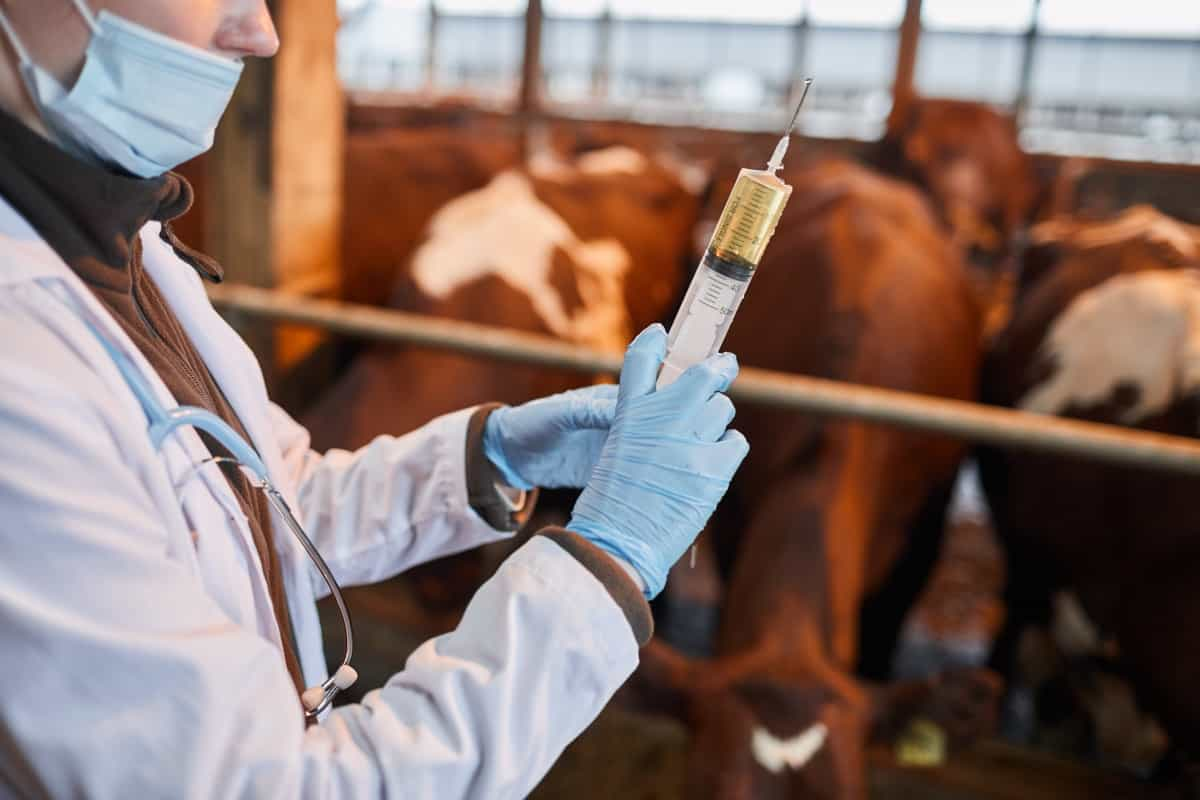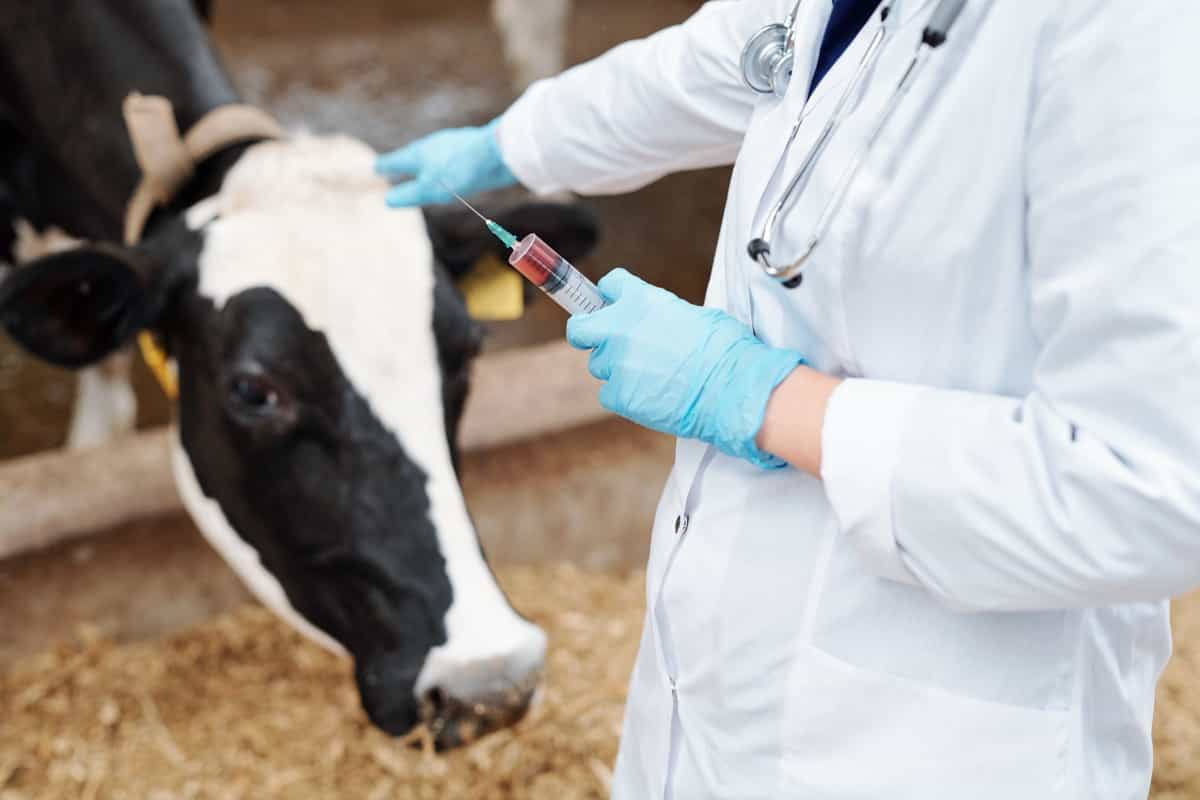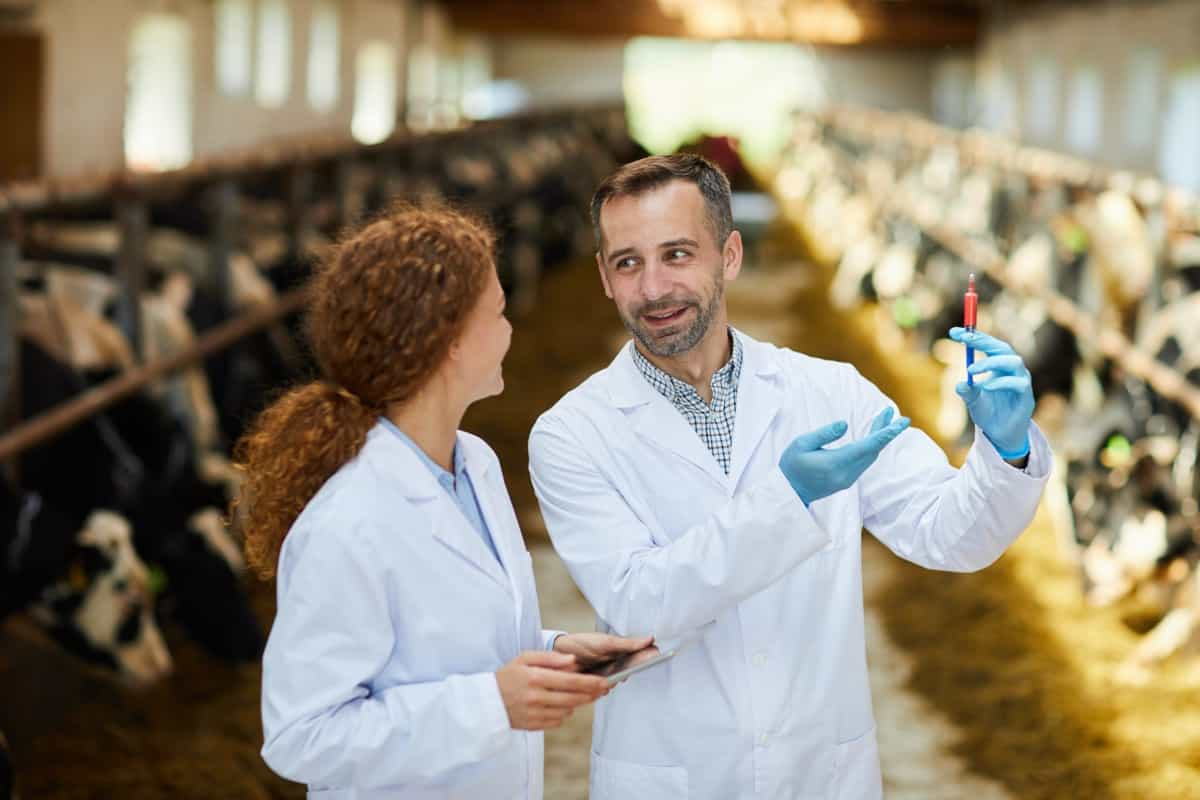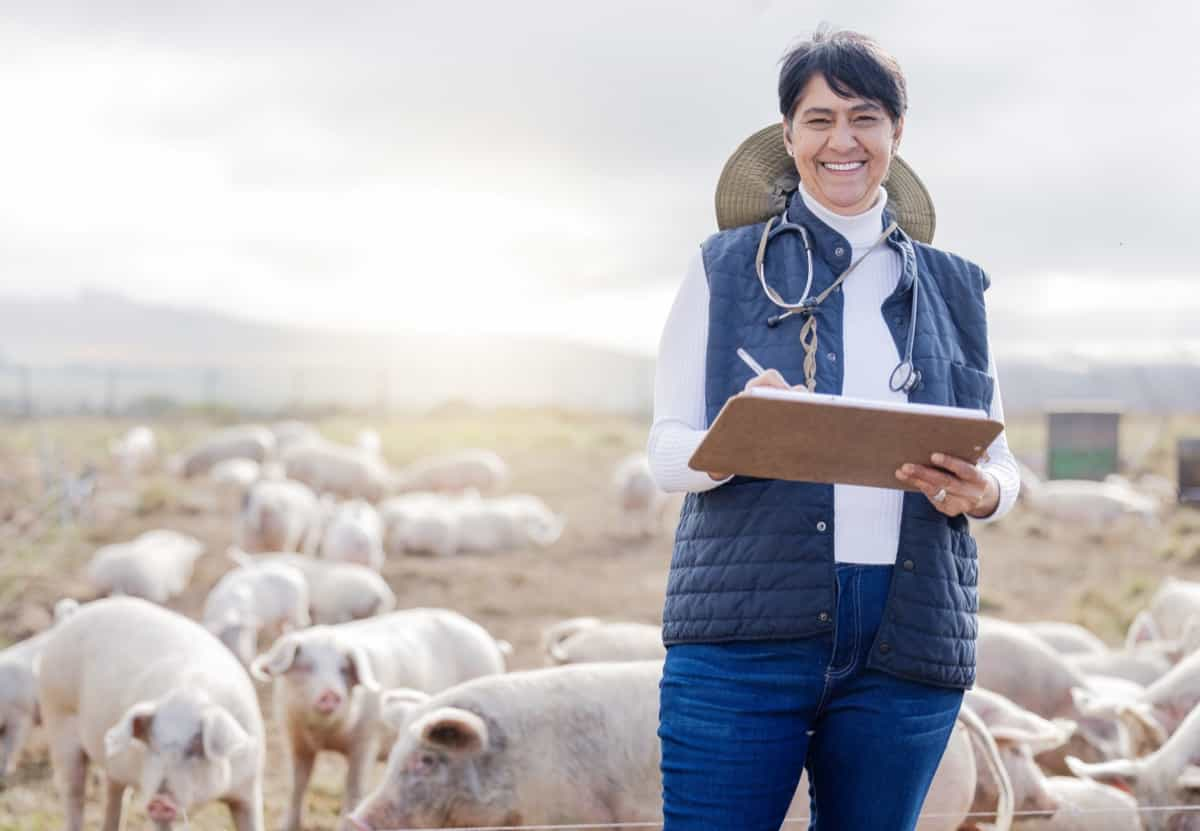Livestock is a source of income and livelihood for millions of rural households in India. However, livestock diseases pose a serious threat to the health and productivity of animals, as well as to the food security and public health of the country. Livestock vaccination is one of the most effective ways to prevent and control major livestock diseases like foot and mouth disease and Brucellosis, which can cause huge economic losses and affect human health.

However, livestock vaccination is not always accessible or affordable for small-scale farmers in rural areas, who often lack the awareness, infrastructure, and financial resources to vaccinate their animals regularly. Moreover, the cost of livestock vaccination varies widely across different states, regions, and types of vaccines, making it difficult for farmers to plan and budget their expenses.
Livestock Vaccination Cost in India
Comparing Livestock Vaccination Prices Across Different States in India
One of the main factors that affect the cost of livestock vaccination in rural India is the price of vaccines, which varies across different states, depending on the availability, quality, and demand of vaccines. The average price of FMD vaccine per dose ranged from Rs. 2.5 in Uttar Pradesh to Rs. 15 in Kerala, while the average price of brucellosis vaccine per dose ranged from Rs. 5 in Uttar Pradesh to Rs. 25 in Kerala. The study also found that the price of vaccines was higher in states with higher per capita income, higher literacy rates, higher veterinary density, and higher livestock population density.
| State | FMD Vaccine Price (Rs.) | Brucellosis Vaccine Price (Rs.) |
| Andhra Pradesh | 6 | 10 |
| Assam | 5 | 10 |
| Bihar | 4 | 10 |
| Chhattisgarh | 4 | 10 |
| Gujarat | 6 | 15 |
| Haryana | 6 | 15 |
| Himachal Pradesh | 6 | 15 |
| Jammu & Kashmir | 6 | 15 |
| Jharkhand | 4 | 10 |
| Karnataka | 8 | 15 |
| Kerala | 15 | 25 |
| Madhya Pradesh | 4 | 10 |
| Maharashtra | 8 | 15 |
| Odisha | 4 | 10 |
| Punjab | 6 | 15 |
| Rajasthan | 4 | 10 |
| Tamil Nadu | 8 | 15 |
| Telangana | 6 | 10 |
| Uttar Pradesh | 2.5 | 5 |
| Uttarakhand | 4 | 10 |
| West Bengal | 5 | 10 |
In case you missed it: Protecting Your Flock: A Comprehensive Guide to Vaccination Schedule for Goats and Sheep

How Government Policies Affect Livestock Vaccination Costs in India
The cost of livestock vaccination in rural India is influenced by government policies regarding the provision and financing of these services. The National Animal Disease Control Programme was launched by Narendra Modi in September 2019, aiming to vaccinate 100% cattle, buffalo, sheep, goat, and pig populations for FMD and 100% bovine female of 4-8 months of age for Brucellosis with a total outlay of Rs.13,343 crore for five years (2019-20 to 2023-24).
The NADCP is a central sector scheme, with 100% of funds provided by the central government to states and union territories. The NADCP is expected to prevent the loss of Rs. 50,000 crore to the government exchequer and increase the economic output of farmers by controlling FMD and Brucellosis, which affect milk and meat production and trade in India.
The Livestock Health and Disease Control (LHDC) scheme also assists states and union territories with the control of other animal diseases under four components: Assistance to States for Control of Animal Diseases, National Project on Rinderpest Eradication (NPRE), National Programme for Prevention and Control of Avian Influenza (NPCAI), and Establishment and Strengthening of Existing Veterinary Hospitals and Dispensaries (ESVHD).
At the state level, different states have their policies and programs for livestock vaccination, which may vary in terms of scope, coverage, quality, subsidy, delivery mechanism, monitoring, and evaluation. Some states may provide free or subsidized vaccines to farmers through government veterinary institutions or mobile veterinary units (MVUs).
The Impact of Livestock Vaccination on Small-Scale Farmers’ Budgets in India
Livestock vaccination can have a positive impact on small-scale farmers’ budgets by reducing the losses due to mortality, morbidity, reduced milk yield, decreased growth rate, infertility, and reduced working capacity of animals caused by various infectious diseases. For example, Foot and Mouth Disease is a highly contagious viral disease that affects cattle, buffaloes, sheep, goats, and pigs and leads to significant economic losses for the farmers.
According to a study by the National Dairy Development Board (NDDB), the annual economic losses due to FMD in India were estimated at Rs. 23,000 crore in 2013. Similarly, Brucellosis is a bacterial disease that causes abortion, infertility, reduced milk production, and weight loss in cattle and buffaloes. The annual economic losses of Brucellosis in India were estimated at Rs. 28,000 crore in 2015. By vaccinating their animals against these diseases, farmers can prevent or minimize these losses and enhance their income and profitability.
In case you missed it: Berseem Forage Cultivation: Best Fodder Farming for Livestock

However, livestock vaccination also involves certain costs for the farmers, such as the cost of vaccine, syringe, needle, transportation, cold chain maintenance, labor, and opportunity cost of time. These costs may vary depending on the type of vaccine, the number of doses required, the frequency of vaccination, the availability of vaccine supply and delivery services, and the location and accessibility of the farmers. For some farmers, especially those who have low incomes or face credit constraints, these costs may be prohibitive or unaffordable.
Cost-Benefit Analysis of Routine Livestock Vaccination in India
A cost-benefit analysis (CBA) is a method used to evaluate the economic efficiency and social desirableness of an intervention or policy. It helps identify the distributional impacts of an intervention or policy among different stakeholders. In India, a CBA of routine livestock vaccination can be conducted to estimate the benefits and costs of vaccination against various diseases over time. Benefits include avoided losses due to mortality, morbidity, reduced milk yield, decreased growth rate, infertility, and reduced working capacity of animals.
Costs include direct vaccine procurement and delivery, indirect costs such as adverse effects, behavioral changes of farmers, and environmental impacts. By deducting discounted costs from discounted benefits, it is possible to express the benefits and costs in monetary terms and determine their net present value (NPV). A positive NPV indicates that the benefits exceed the costs, and a BCR greater than one indicates that the benefits exceed the costs and that the intervention or policy is economically efficient.
Breaking Down the Expenses: What Makes Up the Cost of Livestock Vaccination in India?
Livestock vaccination is one of the most effective ways to prevent and control various diseases that affect animals and humans. However, it also involves some expenses that need to be considered by the farmers and the government.
The type of vaccine: Different vaccines have different prices depending on their quality, efficacy, availability, and demand. For example, the vaccine for foot and mouth disease (FMD) costs around Rs 2 per dose, while the vaccine for brucellosis costs around Rs 20 per dose.
The number of animals: The more animals that need to be vaccinated, the higher the cost. For example, the National Animal Disease Control Programme (NADCP) aims to vaccinate 100% of cattle, buffalo, sheep, goat, pig population for FMD and 100% of bovine female calves of 4-8 months of age for Brucellosis with a total outlay of Rs 13,343 crore for five years.
The frequency of vaccination: Some vaccines need to be administered only once in a lifetime, while others need to be repeated at regular intervals. For example, FMD vaccination needs to be done every six months, while brucellosis vaccination needs to be done only once.
The logistics and infrastructure: The cost of transporting, storing, and administering the vaccines also adds up to the total cost. This includes the cost of cold chain facilities, syringes, needles, ear tags, registration, data entry, monitoring and evaluation.
Manpower and training: The cost of hiring and training qualified veterinarians, para-vets, and vaccinators also contributes to the cost of livestock vaccination. This includes the cost of salaries, incentives, travel allowances, uniforms, equipment, and capacity building.
Affordable Livestock Vaccination Options for Indian Farmers
Government schemes: The government of India has launched several schemes to provide subsidized or free vaccines to farmers under various programs. For example, the NADCP provides 100% central assistance for FMD and brucellosis vaccination. Similarly, the Assistance to States for Control of Animal Diseases (ASCAD) provides 60:40 or 90:10 funding between central and state governments for vaccination against other economically important diseases.
Private sector partnerships: The private sector can also play a role in providing affordable vaccines to farmers through innovative models of collaboration. For example, some vaccine manufacturers offer buy-back schemes or contract farming arrangements with farmers who use their vaccines. Some private companies also partner with NGOs or social enterprises to distribute vaccines to farmers at low or no cost.
In case you missed it: Moringa as Feed for Livestock: Moringa Fodder Crop Yield Per Acre

Community-based initiatives: The farmers themselves can also organize themselves into groups or cooperatives to pool their resources and access vaccines at lower prices. For example, some dairy cooperatives provide vaccines to their members at subsidized rates or deduct the cost from their milk payments. Some farmer groups also form self-help groups or village-level committees to procure and administer vaccines collectively.
Regional Variations in Livestock Vaccination Costs in India
The prevalence and incidence of diseases: Different regions have different levels of risk and exposure to various diseases that affect livestock. For example, FMD is more prevalent in states like Uttar Pradesh, Bihar, West Bengal, and Assam than in states like Gujarat, Rajasthan, and Punjab. Therefore, the frequency and intensity of vaccination may differ across regions.
The availability and accessibility of vaccines: Different regions have different levels of supply and demand for vaccines that affect their prices and availability. For example, some regions may have more vaccine manufacturers or distributors than others. Some regions may also have better road connectivity or cold chain facilities than others.
The socio-economic status of farmers: Different regions have different levels of income and expenditure among farmers that affect their affordability and willingness to pay for vaccines. For example, some regions may have more smallholder or marginal farmers than others. Some regions may also have more subsidies or incentives for vaccination than others.
Financing Livestock Vaccination in India: Subsidies and Grants
Livestock vaccination is a crucial public health service that benefits both animal and human health sectors. However, it requires significant investment from both the public and private sectors. To support the cost of livestock vaccination in India, there are two financing mechanisms: subsidies and grants. Governmental or other organizations may offer subsidies to lower the cost of vaccines for farmers or consumers.
Examples include the NADCP providing 100% central assistance for FMD and Brucellosis vaccination and the ASCAD providing 60:40 or 90:10 funding between central and state governments for other economically important diseases. Grants are non-repayable funds given by the government or other agencies to support the development or implementation of vaccination programs or projects.
The True Cost of Preventing Disease: Livestock Vaccination in India
The costs of vaccines include direct costs such as procurement and administration, such as vaccines, syringes, needles, and registration, as well as indirect costs like transportation, storage, cold chain, manpower, training, publicity, awareness, and research. Opportunity costs involve lost income, productivity, time, or labor due to vaccination.
At the same time, externalities include costs or benefits unreflected in market prices or transactions, such as reduced disease transmission, improved animal welfare, food security, increased trade, poverty reduction, or improved public health due to vaccination. These costs are crucial for effective vaccine administration and prevention.
Evaluating the Economic Impact of Livestock Vaccination Programs in India
Livestock vaccination programs in India have a significant economic impact on both animal and human health sectors. Measuring this impact is challenging due to multiple dimensions and indicators. Methods to evaluate the economic impact include cost-benefit analysis, which compares costs and benefits of a program or project over time, and cost-effectiveness analysis, which compares the costs and effectiveness of different alternatives for achieving a specific objective.
Economic impact analysis measures in economic activity or output due to a program or project using input-output models or social accounting matrices. These methods help to understand the economic impact of livestock vaccination programs in India and provide valuable insights for policymakers and stakeholders.
Strategies to Reduce Livestock Vaccination Costs for Indian Farmers
India has launched several government-sponsored vaccination schemes to combat livestock diseases like Foot and Mouth Disease (FMD) and Brucellosis. The National Animal Disease Control Programme (NADCP) aims to vaccinate 100% of cattle, buffalo, sheep, goat, and pig populations for FMD and 100% of bovine female calves of 4–8 months of age Brucellosis.
In case you missed it: A Guide to Understand Livestock Feeding: Check How this Guide Helps Livestock Farmers

Farmers can benefit from these schemes by registering their animals and following the vaccination schedule. Preventive health management practices, such as adequate nutrition, water, hygiene, housing, biosecurity, and deworming, can reduce disease outbreaks and the need for frequent vaccinations.
Farmers can consult with veterinarians or animal health workers to select appropriate vaccines and vaccination methods based on disease prevalence, risk factors, animal species, age, breed, and health status. Combination vaccines can protect against multiple diseases in one shot, saving time and money. Proper vaccination techniques, such as using sterile needles, syringes, and equipment, are also essential.
Analyzing the Effectiveness vs. Cost of Different Livestock Vaccines in India
Livestock vaccines are crucial for protecting animals from infectious diseases cause significant economic losses and public health threats. However, not all vaccines are equally effective or cost-effective in different settings. To make informed decisions on vaccine use and allocation in India, it is essential to analyze the effectiveness vs. cost of different livestock vaccines. Factors influencing the effectiveness vs. cost of livestock vaccines include:
- The type and severity of the disease.
- The availability and quality of the vaccine.
- The coverage and compliance of the vaccination program.
Some diseases, such as FMD, are more prevalent, contagious, or fatal, requiring more urgent and intensive vaccination efforts. For example, FMD affects cloven-hoofed animals like cattle, buffaloes, sheep, goats, and pigs, leading to reduced milk yield, decreased growth rate, infertility, reduced working capacity, and trade embargoes in the international market.
In 2011, the estimated cost of FMD was US$ 2.6 billion. The availability and quality of the vaccine depend on factors like production capacity, supply chain management, regulatory standards, quality control, and assurance. A scarce, expensive, or substandard vaccine may not be feasible or effective in preventing or controlling a disease.
In case you missed it: Top 19 Livestock Feed Companies in India

Conclusion
Addressing livestock vaccination costs in India necessitates strategic exploration. Implementing efficient vaccination programs, bulk procurement, and public-private partnerships can significantly reduce costs. Such strategies are imperative for ensuring affordable and widespread livestock immunization, fostering animal health, and sustainable agricultural practices.
- Types of Pesticides Used in Agriculture: A Beginner’s Guide
- Economical Aquaculture: A Guide to Low-Budget Fish Farming
- 15 Common Planting Errors That Can Doom Your Fruit Trees
- How to Make Houseplants Bushy: Effective Tips and Ideas
- Innovative Strategies for Boosting Coconut Pollination and Yield
- Pollination Strategies for Maximum Pumpkin Yield
- The Complete Guide to Chicken Fattening: Strategies for Maximum Growth
- Natural Solutions for Tulip Problems: 100% Effective Remedies for Leaf and Bulb-Related Issues
- Revolutionizing Citrus Preservation: Towards a Healthier, Greener Future
- Natural Solutions for Peony Leaf and Flower Problems: 100% Effective Remedies
- Maximizing Profits with Avocado Contract Farming in India: A Comprehensive Guide
- Natural Solutions for Hydrangea Problems: 100% Effective Remedies for Leaf and Flowers
- The Ultimate Guide to Choosing the Perfect Foliage Friend: Bringing Life Indoors
- From Sunlight to Sustainability: 15 Ways to Use Solar Technology in Agriculture
- The Ultimate Guide to Dong Tao Chicken: Exploring from History to Raising
- The Eco-Friendly Makeover: How to Convert Your Unused Swimming Pool into a Fish Pond
- Mastering the Art of Delaware Chicken Farming: Essentials for Healthy Backyard Flocks
- 20 Best Homemade Fertilizers for Money Plant: DIY Recipes and Application Methods
- How to Craft a Comprehensive Free-Range Chicken Farming Business Plan
- Brighten Your Flock: Raising Easter Egger Chickens for Beauty and Bounty
- How to Optimize Your Poultry Egg Farm Business Plan with These Strategies
- Subsidy for Spirulina Cultivation: How Indian Government Schemes Encouraging Spirulina Farmers
- Ultimate Guide to Raising Dominique Chickens: Breeding, Feeding, Egg-Production, and Care
- Mastering the Art of Raising Jersey Giant Chickens: Care, Feeding, and More
- Ultimate Guide to Raising Legbar Chickens: Breeding, Farming Practices, Diet, Egg-Production
- How to Raise Welsummer Chickens: A Comprehensive Guide for Beginners
- How to Protect Indoor Plants in Winter: A Comprehensive Guide
- Ultimate Guide to Grow Bag Gardening: Tips, Tricks, and Planting Ideas for Urban Gardeners
- Guide to Lotus Cultivation: How to Propagate, Plant, Grow, Care, Cost, and Profit
- Agriculture Drone Subsidy Scheme: Government Kisan Subsidy, License, and How to Apply Online
- Ultimate Guide to Raising Araucana Chickens: Breed Profile, Farming Economics, Diet, and Care
- Bringing Hydroponics to Classroom: Importance, Benefits of Learning for School Students
- Ultimate Guide to Raising Polish Chickens: Breed Profile, Farming Economics, Diet, and Care
- Ultimate Guide to Raising Australorp Chickens: Profile, Farming Economics, Egg Production, Diet, and Care
- Silkie Chicken Farming: Raising Practices, Varieties, Egg Production, Diet, and Care
- Sussex Chicken Farming: Raising Practices, Varieties, Egg Production, Diet and Care